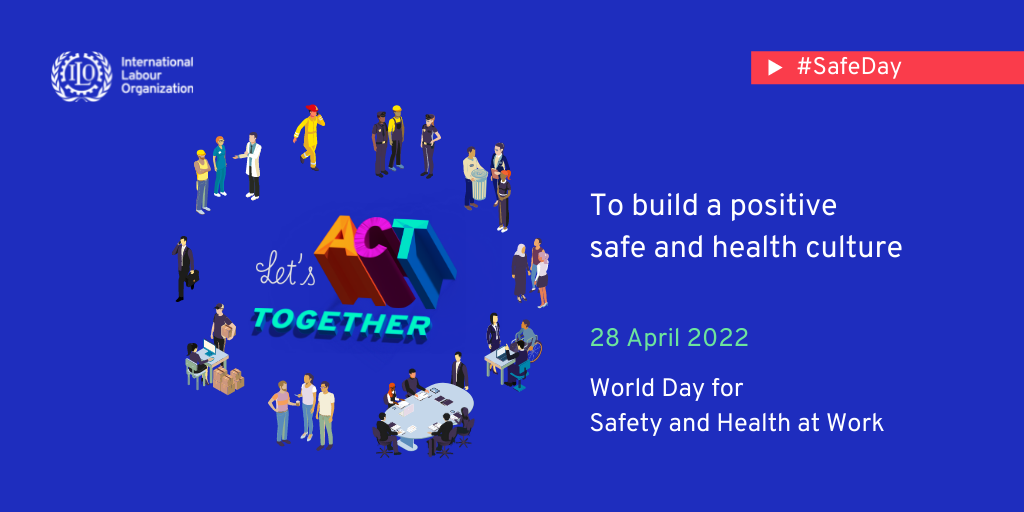The theme of this year’s World Day for Safety and Health at Work will explore the topic of ‘participation and social dialogue in creating a positive safety and health culture.’ In their announcement of the theme for 2022, the International Labour Organisation (ILO) went on to say:
“At the workplace level, a strong Operational Safety and Health (OSH) culture is one in which the right to a safe and healthy working environment is valued and promoted by both management and workers. A positive OSH culture is built on inclusion, through the meaningful involvement of all parties in the ongoing improvement of safety and health at work.”
This is something we wholeheartedly support in words and actions. It’s about moving the conversation away from a product or solution to a collaborative approach where we can analyse safety on-site from all angles.
The Health and Safety Executive (HSE) set out steps to follow when planning to reduce risks from activities at work. These start with eliminate, then substitute, then Engineering controls and Administrative controls, and finally PPE (personal protective equipment). When managing risk you should always start at the top and where reasonably practicable eliminate the risk.
Our proximity warning systems (an engineering control, administrative control, and piece of PPE) help to reduce the risk of vehicle to pedestrian collisions by warning both the driver and the pedestrian when they are too close to working equipment and may be in danger. But linked with our telematics system we help customers use the data gained from site usage to go back to the first steps and see where they can eliminate or substitute.
We’ve seen real results from this. A waste and recycling site we work with acted on the data gained from using our product to make lasting changes on their site to improve safety. The actions they took included:
- Redesigned pedestrian routes
- Improved physical barriers
- Reduced points of access
- Removed the most at-risk role
- Delivered increased awareness and behavioral change amongst the workforce on site
If we loop back to this year’s ILO World Day for Safety and Health at Work theme of ‘participation and social dialogue’ you can see how data can help with this. Training is a big part of what we do in the deployment of our systems. And it’s a vital step to get workers involved in two-way communication. It’s also another measure mentioned by HSE. When you issue PPE, ‘all workers must be trained in the function and limitation of each item of PPE’. When we train people who use our system they're shown how the product works, what behaviours are expected of them as a pedestrian and as a driver/operative, and how it fits within the site’s safe systems of work. This is a continuous process and we work with our construction customers to support red zone training and the thumbs up procedure to show people how a SiteZone proximity warning system works in conjunction with these practices.
Feedback helps us, and people working with moving equipment, to learn and grow. We’ve undertaken surveys a few months after proximity warning systems have been installed to get feedback from operatives on how they find the equipment, improvements they would like to see, and any other points they want to raise. Without this participation and dialogue, we can’t engage with people and make improvements for the future.
This is our approach to safety at work and how we see the most effective results from using a proximity warning system. It’s not a product that can be supplied and forgotten about. By all acting together we can use these systems to increase people’s awareness when working around dangers and change behaviours to ensure that everyone is working in, and building, a positive health and safety culture.


